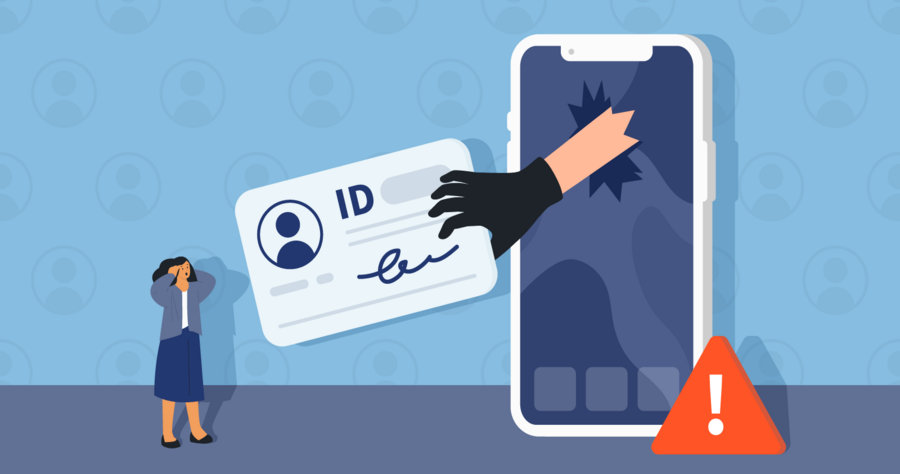Identity theft has become one of the most significant cybersecurity threats in the digital age. With the increase of AI capabilities, digitization of financial transactions, healthcare records and personal data, cybercriminals have more opportunities than ever to exploit vulnerabilities.
How has identity storage changed through the years
In the early days of the web, when standalone websites first emerged (often referred to as Web1), identity storage was primarily centralized. Regardless of which website you registered an account with, your data was stored directly in that website’s database.
Moving on through the years toward Web2, tech giants like Google or Facebook popularized the so called Federated signups and logins. Federated identity is an improvement over centralized identity that allows users to log in to multiple services using a single set of credentials, managed by a trusted third-party provider. Examples include Google Sign-In, Facebook Login and SAML-based enterprise SSO.
Although Federated Identity offers the convenience of using a single Google or Facebook account across multiple platforms, it has also led to greater centralization of identity storage. Many smaller websites no longer build their own sign-up and login systems, opting instead to integrate SSO (Single Sign-On) since it is faster to implement and widely accepted by users as a standard.
As a result, a data breach can expose the private information of tens of millions of users, putting it in the hands of malicious actors who can exploit it to commit identity theft and impersonate individuals.
How much money and data has been stolen in recent years
Since the pandemic, internet usage and the creation of personal accounts have surged dramatically, leading to a significant rise in stored data. With most of this information being kept on centralized servers, incidents of identity theft have also escalated.
Recent reports paint a concerning picture of identity theft worldwide:
- In 2023 alone, identity theft cost victims over $43 billion globally, with fraudsters exploiting stolen personal data for financial gain.
- The U.S. Federal Trade Commission (FTC) received over 1.1 million reports of identity theft in 2023.
- More than 422 million personal records were exposed due to data breaches, according to the Identity Theft Resource Center (ITRC).
- The average cost per identity theft victim was approximately $1,500, but in some cases, individuals lost their entire life savings.
- Synthetic identity fraud (where criminals combine real and fake information to create a new identity) accounted for billions in losses, particularly in banking and credit services.
How Identity Theft Happens
Identity theft often occurs when centralized databases containing sensitive personal information are compromised. Here’s how it happens:
- Single Point of Failure – Centralized databases store vast amounts of personal data (e.g., social security numbers, financial details, medical records). If breached, all user data is exposed at once.
- Hacker Exploits & Attacks – Cybercriminals use techniques like SQL injection, phishing, malware, or credential stuffing to gain unauthorized access to centralized databases.
- Massive Data Breaches – Once inside, hackers exfiltrate sensitive user information and sell it on the dark web, leading to identity theft, fraud and financial loss.
- Third-Party Risks – Many centralized systems rely on third-party data processors, increasing the attack surface for potential breaches.
With the increasing sophistication of these attacks, the need for a more secure identity system has never been greater.
How Self-Sovereign Identity (SSI) can help solve identity theft
Self-Sovereign Identity (SSI) is a revolutionary approach to digital identity that puts control back into the hands of users. Instead of relying on centralized databases (which are prone to breaches), SSI allows individuals to manage their own identity data securely.
- Decentralized Identity: Instead of a company storing your personal data, SSI uses blockchain and decentralized networks to secure identity credentials.
- Verifiable Credentials (VCs): Users receive tamper-proof digital credentials from trusted issuers (e.g., governments, universities, banks).
- Selective Disclosure: Users can share only necessary information instead of exposing full identity details.
- No Passwords Required: SSI eliminates the need for passwords, reducing credential-stuffing attacks.
- Enhanced Security: Even if a company is breached, your identity remains secure since it is not stored in a centralized database.
If you want a more in-depth explanation of how SSI works, you can read our Self-Sovereign Identity (SSI) article.
There are a few implementation and approaches of SSI being developed in the world that could help in real-world scenarios in terms of security, protecting personal data and preventing identity theft through decentralized and blockchain-based solutions.
Here are a few use cases where SSI could be applied:
- Banking & Finance: Instead of storing customer information, banks can verify identity using cryptographic proofs without exposing personal data.
- E-commerce: Customers can prove their age or address without sharing full documents, reducing fraud risks.
- Healthcare: Medical records can be securely stored and shared only with authorized healthcare providers.
- Travel & Immigration: Digital passports and visas based on SSI prevent identity fraud at borders.
Conclusion: a safer digital future with SSI
The rise in identity theft highlights the urgent need for more secure identity solutions. Self-Sovereign Identity (SSI) offers a way forward, empowering users to protect their personal data while enabling businesses and governments to verify identities without risk.
As adoption grows, SSI has the potential to eliminate identity theft, ensuring a safer and more privacy-focused digital world.
